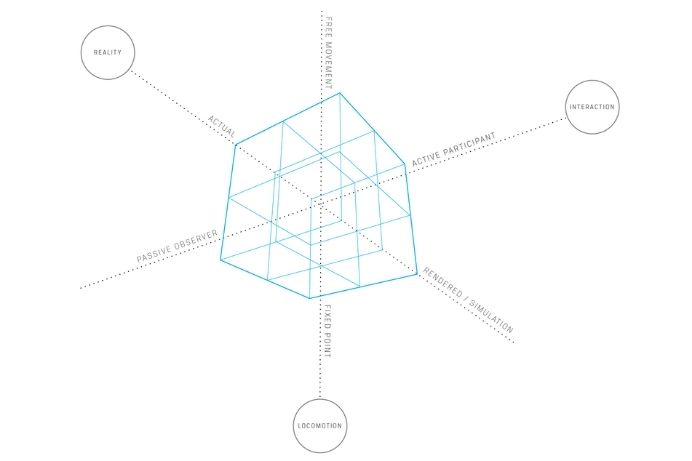What’s The Difference Between UX And UI?
UI and UX design are two of the most often confused and conflated terms in web and app design.
Tonic3 develops and executes strategies that drive profit through Digital Transformation. Practically that means we are built to help clients hone the right strategy, implement the right technology, and build the right long-term capabilities to deliver lasting transformation.
Industries
We believe that effective technology helps people succeed in their daily lives. So we help our clients engineer useful technology for their clients, partners, and employees. That translates to every major industry, but over the years we’ve developed several core areas of expertise.

Before we get into the nuts and bolts of UX for businesses, let's define UX design so that it’s clear why it’s crucial for your company. User experience (UX) refers to how a user feels when interacting with a system, whether that be a website, smartphone app, desktop software, or really any kind of device.
Nowadays, business owners are changing the way they look at long-term business development and user experience. Leaders now work more closely with UX designers, researchers, and engineers to bring life to their products or services. All these roles play a part in improving user experience, which in turn, supports the business and increases engagement. With the right data, UX teams can combine design and a good marketing strategy to create more organic growth.
User-centric design is crucial because it works to meet the demands of the user. It seeks to deliver satisfying experiences so that users are more likely to remain loyal to the brand or service. A meaningful user experience also enables a business to have a better understanding of the customer journey and which digital products or physical products are most beneficial and desirable to their clientele.
Every initiative a company undertakes carries a certain amount of risk. But pushing for a better user experience is definitely a risk worth taking. Inevitably, it puts the business in a better position to achieve success because UX design and design thinking are focused on research, analysis, and testing, which are likely to improve the overall business.
More and more businesses are beginning to understand that it’s much less expensive to prevent potential usability issues or problems upfront by focusing on user experience and design from the beginning than it is to repair them afterward with product redesigns or bug fixes. After all, it's less expensive and far simpler to make design adjustments than development adjustments. Working in this fashion may initially seem more expensive, but in the long run, it can save you money. In addition, it can help create a product that’s set up for greater success, encourages conversions, and effectively engages with your target audience, leading to better results and sales.
A crucial component of UX design is making it as simple as possible for users to engage with your website or app. A better user experience makes things easier for users by reducing the number of steps they have to take to reach their goal. With better usability and user experience, you can reduce the chance that customers will become irate when they can't finish their desired task by making everything as intuitive as possible, whether that’s buying a product, making reservations, going through a database of complex information, or some other action.
First and foremost, you want your customers to be able to find the information they need and to be satisfied with their results. However, driving conversions and engagements across your website or app is even more crucial for the success of your organization.
CTAs, or calls to action, can be found on websites or social media, usually in the form of buttons or links that say things like "book now" or "join our mailing list." On a website or app, a clear CTA not only improve user experience but significantly increase conversion rates.
In theory, the user should be able to tell what CTA buttons are for. CTA buttons that simply say "click here" or similar are inadequate as a proper CTA. The button merely instructs the user to click the button; it doesn’t mention reason why they should do so, making the experience more difficult and confusing. Additionally, "click here" CTAs are generally bad for SEO, and since we all want to do everything we can to improve our Google results, they should be avoided.
Google aggressively promotes exceptional user experience in search results. The algorithm the search engine uses heavily considers user experience. After all, its objective is to promptly and efficiently offer users the best response to their inquiries by serving them the most useful material first. Therefore, bad user experience can ultimately lead to bad SEO rankings or, in the case of paid advertising (PPC), a weak ad campaign.
Improving your UX design can increase brand loyalty. Customer activation, which translates into recognition of and loyalty to your brand and its goods and services, is promoted through seamless and engaging encounters. With that in mind, a positive user experience is essential when developing a relationship with your target customers and gaining their trust in your brand, product design, and service.
Excellent UX design helps keep and grow an existing client base in addition to drawing in new users. The metrics gathered in the process can be used to optimize your design and boost user engagement, which will inevitably lead to increased customer loyalty and retention.
The field of UX will continue to progress in these areas and work through these challenges, among others. Quickened by the pandemic, small businesses, medium-sized companies, and enterprise organizations alike are growing and evolving quickly so as to create new products and regularly come up with new innovations. In particular, the industries using UX strategies are constantly expanding. These businesses are finding new ways to grow and interact with customers every day using UX technology and are more successful because of it.
With such exponential growth, the tools and guidelines to create the best UX possible will be refined and become more readily available. These developments will help to evolve and expand the definition and capabilities of UX as we know it.
About our Company: Tonic3 is an international agency with headquarters in Dallas and offices in Madrid, Buenos Aires, and São Paulo. We've worked with a wide variety of clients over our 27 years in business, from large corporations to small start-ups in over 20 different countries. A few of the brands we’ve worked with include Disney, Citibank, Yum! Brands, Lennox, and Accor Hotels.
We’re considered experts in agile methodologies, cutting-edge visual techniques, and UX design. We focus on user-centric design, making sure the final product works well for both our clients and their customers by testing everything thoroughly to make sure it will work smoothly long before it launches.

UI and UX design are two of the most often confused and conflated terms in web and app design.

Finally, I have finished, it has been months of design and layout, my new website is in production.

Virtual and Augmented Reality technologies are stepping up their game and into our daily routines by the minute. The ecosystem of many businesses and...